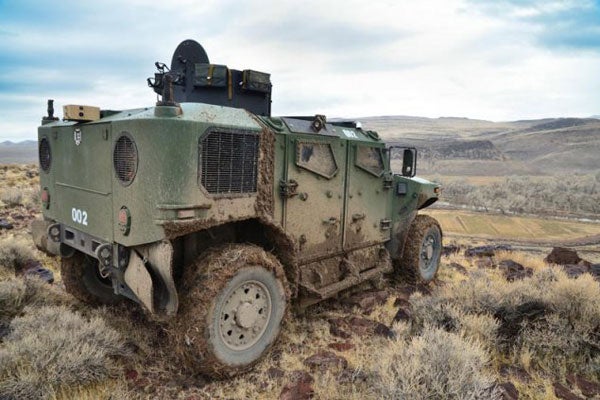
The Ultra Light Vehicle (ULV) Project involves the design, development and construction of three identical light tactical research prototype vehicles. The project is currently in the advanced testing phase, the results of which are expected in early 2014.
The three hybrid ULVs, powered by a diesel engine and an electric generator, were developed integrating advanced technologies and commercial off-the-shelf (COTS) products. The vehicles are primarily intended to provide a research and development platform, the data produced from which is expected to guide future programmes in developing enhanced combat vehicles. Actual production of the ULV for combat is not envisioned however.
Details of the ULV Project
The Office of Secretary of Defense (OSD) and Defense Advanced Research Projects Agency (DARPA) selected the US Army Tank Automotive Research, Development and Engineering Center (TARDEC) to lead a team developing three vehicles in early 2010. The development of the ULVs began in Fall 2011.
The project is wholly funded by the customer OSD and was initiated to meet the objectives including a payload capacity of 4,500lb, a weight of 14,000lb, protection in competent with the currently fielded mine-resistant ambush-protected vehicles (MRAP), and a price of $250,000 per vehicle with a consideration of a 5,000-unit production run.
The design of the ULV was developed by Hardwire Armor Systems, which acted as the lead contractor for the project. The ULV project moved from the design phase to the prototype phase within 16 months.
JLTV Eagle is a light tactical vehicle being developed by General Tactical Vehicles (GTV) for the Joint Light Tactical Vehicle (JLTV) programme in the United States.
Two of the ULVs are currently undergoing survivability testing in Nevada and Maryland to evaluate their blast and ballistic protection capabilities, while the third vehicle is at TARDEC, where its hybrid electric setup will be evaluated. The third vehicle will be preserved as a test platform, while the first two will be destroyed as part of the survivability test.
Design of the ULV
The vehicle features a spacious interior with a volume of 171ft³ and can accommodate four crew in addition to a gunner. The vehicle is 5.05m in length and 2.4m in width. It has a curb weight of 13,916lb and a gross weight of 18,200lb. The payload capacity of the ULV is 4,284lb.
The front and rear steel frames of the vehicle, extending directly from the cab, create a monocoque structure without a traditional frame. The majority of the vehicle systems is hinged directly to the front and rear frames. The body is constructed of lightweight high-strength steel and advanced composite materials.
The UAV features seven egress points, quick-release and removable components, and stowage space for personnel and mission-specific items. The front and rear mounted two ultra wide-angle FLIR ThermoVision WideEye II imagers provide 360° situational awareness.
ULV’S protection features
The ULV is capable of providing under-body protection from mines and improvised explosive devices (IED), and side protection from small arms fire, IEDs, explosively formed penetrators (EFP) and rocket propelled grenades (RPG).
The clean under-body without the standard equipments underneath the vehicle enhance the capability of withstanding an IED explosion.
The ULV integrates several blast-mitigating equipments under the hull. The interiors are provided with crushable floating floor system that eliminates shock waves caused by blast impacts to the feet. The ULVs integrate blast limiting attenuation seats supplied by Jankel. The vehicle also incorporates five-point restraint systems, and spatial accommodations to mitigate head impacts and flail injuries.
Communication system of the ULV
The ULV’s configurable command, control, communications, computers, intelligence, surveillance and reconnaissance and electronic warfare (C4ISR & EW) kit includes a RF-7800N-CP mobile computing platform (MCP), a AN/VRC-110 multiband vehicular radio system with AN/PRC-152 Type-1 handheld multiband radio, and dual RF-300M-V150 50 Watt vehicular adaptor with two PRC-117G(V)1(C) Type-1 wideband multiband radios with Selective Availability Anti-spoofing Module (SAASM) Internal based global positioning system (GPS).
The ULV is further equipped with a Harris RF-7800I vehicular intercom system, one system remote video terminal and transceiver with remote optical video enhanced receiver (ROVER), fortress encrypted tactical wireless mesh, Boomerang geo-rectified shooter detection system, and a counter radio controlled improvised explosive device (RCIED) modular countermeasure suite.
Propulsion details
The ULV is powered by a Subaru Boxer Turbodiesel engine which provides a maximum power output of 175hp and a torque of 260lb-ft. The engine drives UQM Technology’s PowerPhase 200 generator, which has a peak power output of 200kW and a continuous power output capacity of 120kW. The generator in turn powers two electric motors turning the wheels.
Each of the two Li-Iron Phosphate Batteries (Li-Fe-PO4) has a peak output capacity of 180kW and a continuous output capacity of 65kW.
The two electric motors are respectively fitted at the front and the rear of the ULV, while the engine is mounted in the front and the electric generator in the rear.
The vehicle is also equipped with a Jet Propellant 8 (JP8) 30 gallon tank, American Traction Systems’ (ATS) drive inverters, and 410HVH HT drive motors, High Voltage Hairpin Conductor and Permanent Magnet Rotor supplied by Remy Electric Motors.
Performance and mobility
The ULV can reach a distance of 337 miles, travelling at a speed of 35mph on flat surface without refuelling, and can run for more than 10 miles on battery alone. It is fitted with Hutchinson aluminium wheels and Mickey Thompson Tires’ Baja ATZ Radials. The wheelbase of the vehicle is 134 inches, whereas the ground clearance varies from 5in to 23in.
The vehicle’s compressible liquid adaptive suspension system is equipped with integrated elastomeric jounce bumper.

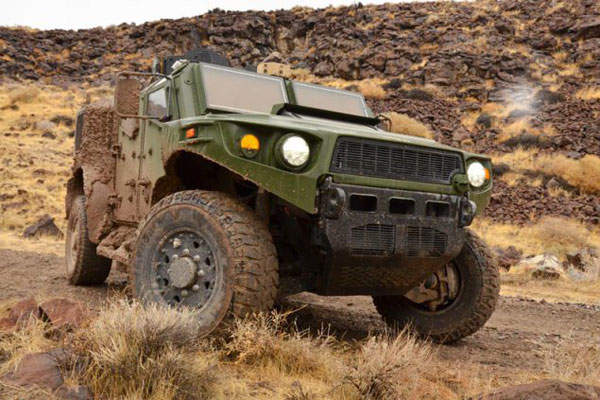
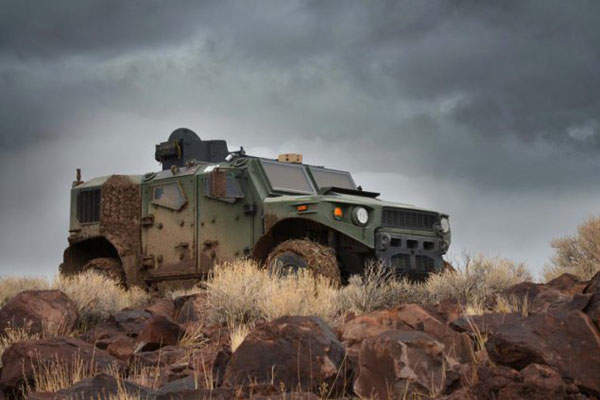
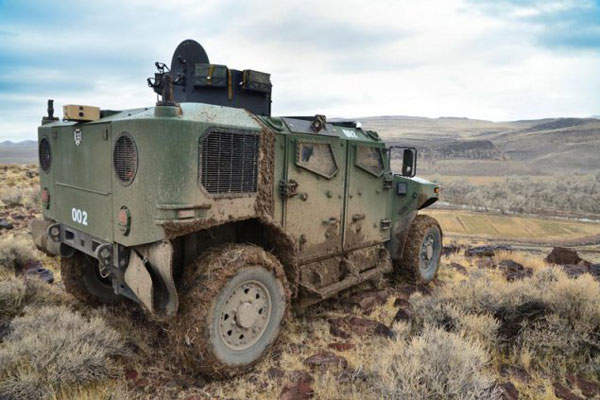
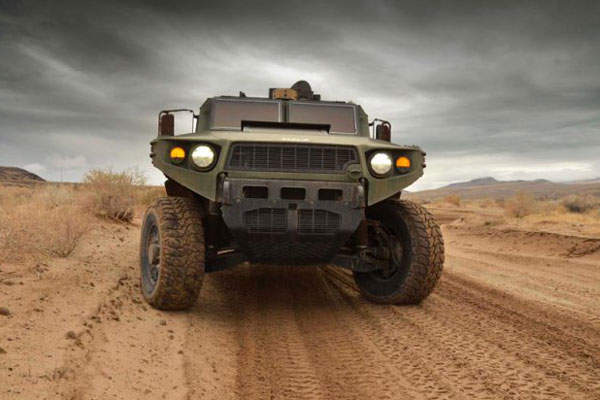


.gif)
